
Mohan, our founder says…
In the last two decades, I have frequently visited several National Parks and Wildlife sanctuaries in India with people connected closely with Nature, Wildlife and Conservation. Passionate and knowledgeable naturalist guides have ensured that I have fallen in love with the jungles again and again, by decoding the forests and talking to me about animal behaviour and conservation challenges. From termite mounds to pug marks of the wild cats, from grasses to unique species of trees and the forest dwelling tribes, everything in the jungle is connected, a fact that naturalists could highlight in a special way.
This helped me understand and appreciate what one can see in these beautiful forests rather than getting lost in search of the elusive. I began to understand the importance of every element of the forest that played a crucial role in preserving and sustaining this eco-system. This continued passage through the forests and love for nature and wildlife led me to launch WATCH – an acronym for Wildlife, Adventure, Tribes, Conservation & Habitat.
+ Read More
Wildlife

While Tigers reign supreme in the Indian forests and brochures to travellers and photographers around the world star the striped Cat on the cover page, India’s natural history occupies a larger canvas.
 Amidst the rocky snowclad mountains of Ladakh, Spiti and neighbouring valleys, rules the Snow Leopard. Often referred to as the ‘grey ghost’, and he is undoubtedly the top predator of these high mountains and shares space with other competitive predators such as the Tibetan Wolves, the rarely seen Eurasian Lynx and the ever so sly and cunning Red Fox. Prey here is scarce and include the Blue Sheep or Bharal, the impressive Asiatic Ibex, Ladakhi Urial, and Argali (an Asian cousin to the big horned sheep found in the Americas). Other highly endangered mammals found in remote pockets in small numbers include the Kashmiri Markhor, and the Tibetan antelope. While Marmots form a large prey base of small sizes, they are often hunted as prey by the magnificent Golden Eagle.
Amidst the rocky snowclad mountains of Ladakh, Spiti and neighbouring valleys, rules the Snow Leopard. Often referred to as the ‘grey ghost’, and he is undoubtedly the top predator of these high mountains and shares space with other competitive predators such as the Tibetan Wolves, the rarely seen Eurasian Lynx and the ever so sly and cunning Red Fox. Prey here is scarce and include the Blue Sheep or Bharal, the impressive Asiatic Ibex, Ladakhi Urial, and Argali (an Asian cousin to the big horned sheep found in the Americas). Other highly endangered mammals found in remote pockets in small numbers include the Kashmiri Markhor, and the Tibetan antelope. While Marmots form a large prey base of small sizes, they are often hunted as prey by the magnificent Golden Eagle.
Don’t be surprised if you manage to sight the Bearded Vultures in these mountains. They help clean up the bone marrows of old carcasses. While man-animal conflict is un-avoidable, deep linked roots of the Ladakhi people to Buddhism ensures reverence to life large and small, domestic, or wild. High altitude lakes in these regions are home to summer breeders of large flocks of Bar Headed Geese and Ruddy Shelduck to name a few while the Chuker partridge happens to be the most noticeable and striking of all. Move southwest towards Kashmir, a carpet of wild flowers cover the meadows and pastures where small high-altitude rodents such as Pika surprisingly serve as a significant prey for a large mammal like the Brown Bear. The last of the higher dry mountains eventually give way to montane forests home to the Hangul, or the Red Deer as well as Asiatic Black Bears.
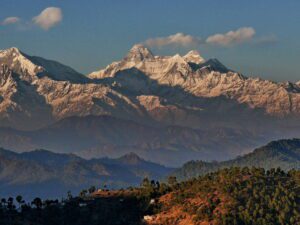 There is a noticeable increase in bird life with Magpies and warblers. Very much within the Himalayas but moving eastward into the regions of Himachal, Garhwal and Kumaon are a continuous stretch of temperate coniferous forests. This includes Old Cedar, Oak and Rhododendrons to name a few that make the forests well wooded while ferns and wild mushrooms cover the moist forest floor. A little further down in the Himalayan range at altitudes over 1100 feet, begins the pine line. Throughout this large stretch of the Western Himalayas are avian fauna in high numbers. From Golden Bush Robins to Sunbirds, Spotted Fork tails and Red starts down in the streams to a variety of Tits near remote village orchards, birding is endless.
There is a noticeable increase in bird life with Magpies and warblers. Very much within the Himalayas but moving eastward into the regions of Himachal, Garhwal and Kumaon are a continuous stretch of temperate coniferous forests. This includes Old Cedar, Oak and Rhododendrons to name a few that make the forests well wooded while ferns and wild mushrooms cover the moist forest floor. A little further down in the Himalayan range at altitudes over 1100 feet, begins the pine line. Throughout this large stretch of the Western Himalayas are avian fauna in high numbers. From Golden Bush Robins to Sunbirds, Spotted Fork tails and Red starts down in the streams to a variety of Tits near remote village orchards, birding is endless.
Apart from the ever chattering White-throated laughing Thrush there are Woodpeckers, Jays, Schimitar Babblers and Rufous Sibia to highlight a few of the many iconic birds sought after. Secret mammals too seclude themselves in these dense forests such as the Tahr, Goral, Musk Deer and Muntjac. One would also see the first signs of primates including the Rhesus Macaque and Langur monkey. While Jackals and Red Fox play the role of both scavengers and small hunters, the top predator appears in the form of the fearless Leopard. Since the time of Corbett, Leopard and man have been criss-crossing paths in these hills and at times conflict is serious and inevitable. It is in these regions from where the true story and book ‘The Man Eating Leopard of Rudraprayag’, finds its origins.
 In the foothills of the Himalayas in Northern India is one of the most famed and the first national park and Tiger Reserve of India that we know as Corbett National Park. Grasslands abundant with Elephants, River Otters and Gharials are the fauna to watch out in the Ramganga River, that traverse through the park and is rich for Mahaseer fishing . Further east is the less explored park Dudhwa on the border of India and Nepal. Another region of the Himalayan foothills, Dudhwa is home to another large mammal apart from the Tiger and Elephant, that is the One-horned Rhinoceros.
In the foothills of the Himalayas in Northern India is one of the most famed and the first national park and Tiger Reserve of India that we know as Corbett National Park. Grasslands abundant with Elephants, River Otters and Gharials are the fauna to watch out in the Ramganga River, that traverse through the park and is rich for Mahaseer fishing . Further east is the less explored park Dudhwa on the border of India and Nepal. Another region of the Himalayan foothills, Dudhwa is home to another large mammal apart from the Tiger and Elephant, that is the One-horned Rhinoceros.
Both Corbett and Dudhwa are also good introduction to India’s common Wildlife such as Spotted Deer-our most common Deer, the Sambar- also our largest Deer, and more of the Langur Monkeys. The forests of Dudhwa are some of the finest and are home to unique specie of Deer- the Swamp Deer found only in such habitats of large grasslands, typical of the terai region along with large tracts of semi-evergreen forests of Sal trees.
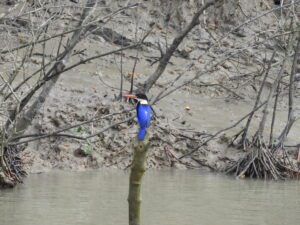 Even further east, and we cross the hardly visited yet rich forests of Valmiki in Bihar. The river channels here are home to River Dolphins. Continue towards East India, and we touch upon the Sunderbans on the Indo-Bangladesh border recorded to be the largest mangrove delta in the world. Cruise through narrow creeks and large channels to look for Saltwater Crocodiles, Sea Eagles, Kingfishers, water monitors, mudskippers and multiple species of crabs. Home also to the infamous man-eating Swamp Tiger, sighting the big Cat here would be as good as one in Siberia or Sumatra.
Even further east, and we cross the hardly visited yet rich forests of Valmiki in Bihar. The river channels here are home to River Dolphins. Continue towards East India, and we touch upon the Sunderbans on the Indo-Bangladesh border recorded to be the largest mangrove delta in the world. Cruise through narrow creeks and large channels to look for Saltwater Crocodiles, Sea Eagles, Kingfishers, water monitors, mudskippers and multiple species of crabs. Home also to the infamous man-eating Swamp Tiger, sighting the big Cat here would be as good as one in Siberia or Sumatra. Eastward and onto remote Himalayan forests once again, and you find delightful magnolia and Rhododendrons in plenty. Highlight species found in these hills of Darjeeling and Sikkim is the Red Panda. These ancient forests also hide other smaller mammals such as Yellow Throated Martens, the strictly nocturnal Red Giant Flying Squirrel and more exotic species of birds including minivets, parrotbills and colourful pheasants such as the Kalij and Satyr Tragopan. Lakes of these mountains are a home to a rarely studied amphibian- the Himalayan Salamander. Further east while entering Buxa, once haunt of Tigers in north Bengal, harbours a promising record of the smallest of Big Cats- the Clouded Leopard.
Eastward and onto remote Himalayan forests once again, and you find delightful magnolia and Rhododendrons in plenty. Highlight species found in these hills of Darjeeling and Sikkim is the Red Panda. These ancient forests also hide other smaller mammals such as Yellow Throated Martens, the strictly nocturnal Red Giant Flying Squirrel and more exotic species of birds including minivets, parrotbills and colourful pheasants such as the Kalij and Satyr Tragopan. Lakes of these mountains are a home to a rarely studied amphibian- the Himalayan Salamander. Further east while entering Buxa, once haunt of Tigers in north Bengal, harbours a promising record of the smallest of Big Cats- the Clouded Leopard.
In these very flood plains, tea and rail cut through much of what was once undisturbed forests, showcasing the challenge that Elephants face in world created by man. Amidst this, to note is the abundant life of butterflies of colourful species -Himalayan jester to dark beauties and peacock pansies. Into the Northeast is the Khaziranga National Park, a major conservation success story reflected in it population of 2000 Rhinos. Once reduced to less than 200, strict conservation measures have helped them multiply in thousands to what it once was.This is also a thriving habitat for a whole array of birds including storks, kingfishers, fish eagles, ospreys etc. and herbivores such as Wild Elephants, Water Buffaloes, Hog Deer, Sambar and Swamp Deer. The nearby Orang forests harbour the endangered Pygmy Hog, and interestingly home to a very high density of Tigers too. Into more remote corners of the north-eastern region, are moist tropical forests hiding unique and rarely seen Lesser Cats such as the Golden Cats and Marbled Cats. These are also hornbill country- from Oriental Pied Hornbills to Rufous Necked and Wreathed Hornbill, impressive bird making the swooshing sound as they fly through and above the thick canopies. It would be difficult to overlook the rich primate diversity here from Spectacled Monkeys to Hoolock Gibbons to Slow Loris and Assamese Macaques.

Further south into the Deccan and Coromandel, and we look at how Green and Olive Ridley Turtles have found safe nesting grounds at the seashores of the Bay of Bengal. South eastward to the islands of Andaman and Nicobar, are a rich diversity of marine Fauna such as multiple species of Dolphins, Turtles, and the rare dugong in addition to indigenous Birds of the island
 Moving south, where we enter into a gigantic contiguous forest cover that includes ever green to semi-evergreen to tropical moist Shola Forests together forming the Nilgiri Biosphere Reserve. This gives you a great chance to see not just Tigers, but also Black panthers. The Nilgiris are home to a rich population of Elephants and unique primates such as Nilgiri Langurs and Lion Tail Macaques. Here the macro life becomes more visible- Malabar gliding Frogs to Blue-eyed Bush Frogs to Pit Vipers and King Cobras.
Moving south, where we enter into a gigantic contiguous forest cover that includes ever green to semi-evergreen to tropical moist Shola Forests together forming the Nilgiri Biosphere Reserve. This gives you a great chance to see not just Tigers, but also Black panthers. The Nilgiris are home to a rich population of Elephants and unique primates such as Nilgiri Langurs and Lion Tail Macaques. Here the macro life becomes more visible- Malabar gliding Frogs to Blue-eyed Bush Frogs to Pit Vipers and King Cobras.
The reptile and amphibian world comes alive in the forests of the Western Ghats apart from Endemic birds such as Black and Orange flycatchers to Malabar trogons which add their colours to this green word while in many junctures’ large plantations of tea, coffee, pepper and cardamom interspread and overlap with the Nilgiris. West towards the islands of Lakshwadeep remains some of the richest corals in the country.
 Making our way up from South towards Central India – the land that inspired Kipling’s Jungle Book. Here the characters of Bagheera the Leopard, Sher Khan the Tiger, Bhaloo the Sloth Bear and the Wolf or Wild Dog packs play out their part. These are also some of the finest homes for wild Tigers, still intact. Yet within the Central Indian Wilderness of the world of Kipling and diaries from Cp. James Forsythe, there is much diversity from semi-evergreen Sal in Kanha, to teak dominated landscape of Pench to a bamboo haven in Tadoba. Multiple flora including the Ghost Tree, the ancient Ficus, fruiting trees such as Mahua and flowering trees of Palash (Butea monosperma) and Red-cotton silk are only some of the many that the rest of the forests comprise of. And it is in the dense forests of Satpura where the Malabar Squirrel, native to Nilgiris has made this its northern most kingdom. Notice also great works of weaver ants as they dominate much of the insect world. Canoeing up from the Denwa to the Sonbhadra river, during the colder months one would encounter an amazing variety of birdlife – shanks, stilts, terns, storks, Indian skimmer and winter visitors in large numbers from the Himalayas like the Bar headed Geese.
Making our way up from South towards Central India – the land that inspired Kipling’s Jungle Book. Here the characters of Bagheera the Leopard, Sher Khan the Tiger, Bhaloo the Sloth Bear and the Wolf or Wild Dog packs play out their part. These are also some of the finest homes for wild Tigers, still intact. Yet within the Central Indian Wilderness of the world of Kipling and diaries from Cp. James Forsythe, there is much diversity from semi-evergreen Sal in Kanha, to teak dominated landscape of Pench to a bamboo haven in Tadoba. Multiple flora including the Ghost Tree, the ancient Ficus, fruiting trees such as Mahua and flowering trees of Palash (Butea monosperma) and Red-cotton silk are only some of the many that the rest of the forests comprise of. And it is in the dense forests of Satpura where the Malabar Squirrel, native to Nilgiris has made this its northern most kingdom. Notice also great works of weaver ants as they dominate much of the insect world. Canoeing up from the Denwa to the Sonbhadra river, during the colder months one would encounter an amazing variety of birdlife – shanks, stilts, terns, storks, Indian skimmer and winter visitors in large numbers from the Himalayas like the Bar headed Geese.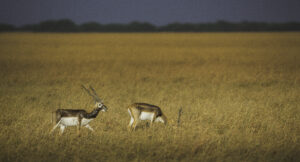 As we move west towards Gujarat, the landscape changes to semi-arid and dry forests. Winter Migrant birds such as Demoiselle Cranes throng to rural villages in thousands. Other important roosting places are for Birds of Prey are the savannah grasslands of Velavadhar, a paradise for the Harrier enthusiasts – Pallid, Montagu, Hen and the Western Marsh roost here, also home to huge number of Black Buck antelope, along with a fair chance to see Wolves and Striped Hyenas. While Kutch brings an unexpected landscape in the form of a salt basin, it is home to the Asiatic Wild Ass and flamingos, additionally one can also sight Desert Cats and Desert Fox.
A special mention of Gir Forests in this region as it is the last wild home for Asiatic Lions in the World. India’s yet another success story where the numbers once reduced to less than 30, are now a thriving population of over 400 Lions. Ironically this is also home to a large number of Leopards along with a significant number of Nilgai (India’s largest antelope), Chinkara (India’s only Gazelle), Striped Hyena and Golden Jackal creating a landscape that is akin to Africa.
As we move west towards Gujarat, the landscape changes to semi-arid and dry forests. Winter Migrant birds such as Demoiselle Cranes throng to rural villages in thousands. Other important roosting places are for Birds of Prey are the savannah grasslands of Velavadhar, a paradise for the Harrier enthusiasts – Pallid, Montagu, Hen and the Western Marsh roost here, also home to huge number of Black Buck antelope, along with a fair chance to see Wolves and Striped Hyenas. While Kutch brings an unexpected landscape in the form of a salt basin, it is home to the Asiatic Wild Ass and flamingos, additionally one can also sight Desert Cats and Desert Fox.
A special mention of Gir Forests in this region as it is the last wild home for Asiatic Lions in the World. India’s yet another success story where the numbers once reduced to less than 30, are now a thriving population of over 400 Lions. Ironically this is also home to a large number of Leopards along with a significant number of Nilgai (India’s largest antelope), Chinkara (India’s only Gazelle), Striped Hyena and Golden Jackal creating a landscape that is akin to Africa.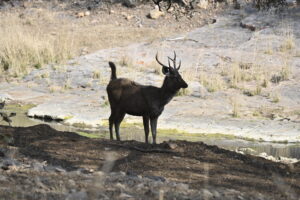 A little up North-West, is an interesting open wilderness not bound by rules or restriction where Leopards have been living beside man for generations close to the village of Jawai. Further in the semi-arid forests of India’s famed Ranthambore National Park, a Tiger may be seen resting peacefully inside a fort, once the abode of Kings of a kingdom that is now a beautiful forest. Ranthambhore is also home to Machili – the iconic symbol for wildlife tourism.
A little up North-West, is an interesting open wilderness not bound by rules or restriction where Leopards have been living beside man for generations close to the village of Jawai. Further in the semi-arid forests of India’s famed Ranthambore National Park, a Tiger may be seen resting peacefully inside a fort, once the abode of Kings of a kingdom that is now a beautiful forest. Ranthambhore is also home to Machili – the iconic symbol for wildlife tourism.
Diversity in such vastness that is the Indian sub-continent, as such a mere passage to tick a box or two will not do justice to the wilderness that is in store; it is for the explorer and nature lover in you to come and unearth the endless stories waiting to reveal themselves to you.
Adventure

If you wish to see the wild and be among the wild, you would need to often veer away from the urban, rural and move beyond comfortable flights and drives. To see spectacular landscapes, seascapes, mangroves and forests inhabited by the wild and free, one needs to indulge in some adventure – trek that hill, cruise down the river, drive through forests, canoe, ride an elephant, walk or cycle into the wilderness.

Some of our more adventure ridden wild experiences are going deep into the hills to camp close to lesser-known wildlife parks, trek a few days to see species like the red Panda, trek in sub-zero conditions to see the elusive snow leopard, walks and hikes in the Himalayan foothills for birding, cruise through the mangroves of Sundarbans to see rare wildlife in the world’s largest delta like the saltwater crocodile, fishing cats etc.
Every adventure included in W.A.T.C.H will be to bring you into viewing proximity of Indian wildlife, birds, forests, and pristine landscapes.
Tribes

The origins and existence of the ethnic tribal groups of India can be traced back far beyond the Indus valley civilisation which flourished 3000 years BC in the North and North-Western parts of India. The rock paintings of Bhimbhetka, near the city of Bhopal, are testimony to this fact that tribal people existed across Central and other parts of India, almost 30000 years ago.

Today, the population of these ethnic groups and communities spread across India, exceeds a 100 million people. They are also listed as a specific group of people in our constitution as “Scheduled Tribes”.
Another term that is used to refer to tribes is “Adivasis” and rightly so because of it’s analogy which means “original inhabitants”. They have continued to inhabit some of the most remote lands and in some of the most hostile conditions. They have not just lived in these conditions but have co-existed with nature and wildlife and protected the biodiversity of our forested regions, for thousands of years, as part of their cultural and ritualistic life.
The forested valleys of Orissa in South Eastern part of India, have the largest concentration of the tribal communities some of which include the Saora, Bonda and Desia and Kutia Kondh tribes, with near zero literacy and high independence on nature for a living. Visiting a tribal market is one of the best ways to meet and intract with the people of these communities.
Some of the largest tribes such as Bhils, Gonds and Santhals are spread across the dense forests of Central India.
These tribes are known for their costumes, weekly haats, festivals where the use of Mahua a local brew, made with flowers of a tree with the same name, indigenous to these forests, brings out some of the best foot tapping performances of tribal dances during their celebrations.
The remote valleys and hills of the North Eastern part of India, have been home to several ethnic groups. To name a few the Apatanis of Arunchal, the Angamis of Nagaland, Boros and Mishmis of Assam, famous for their graceful dances, their lovely bamboo handicraft and their handwoven textiles. Modernisation may have brought some of these tribes closer to mainstream society, yet, majority of them have retained their original customs and rituals and way of life.
In a world where the rules of living are framed and governed by the growing needs of mankind, W.A.T.C.H. endeavours to connect with these indigenous communities of people to learn the simple yet intriguing ways of life that has enabled them to remain close to nature and wild, yet sustain them.
Conservation & Habitat


24% of the landmass of the Indian subcontinent is under forest cover and continues to be under severe stress due to deforestation, mining, development etc. India’s forest laws are a complex tangle of rules and regulations, each aimed towards seemingly divergent goals. In less than a century we have lost over 40% of our forests, not long-ago India’s forests were continuous and connected thriving habitats linked by corridors, many now are severely affected by roads and railways, and unmitigated expansion of cities.
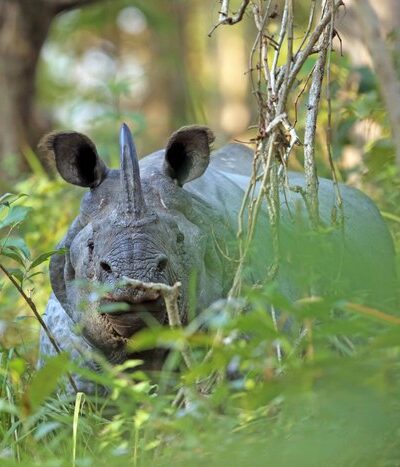
It is also a fact that a large section of our tribal and rural population is forest dependent for their livelihood. India’s conservation history covers diverse issues related to forests like poaching, habitat loss, human-wildlife conflict, endangered species, species richness etc. Some of them are addressed by government organisations, international organisations, not-for-profit organisations, institutions, community initiatives and private initiatives.
In the context of the current wildlife scenario, explorations into forests cannot be complete without understanding the challenges that are faced by the forests and their wild denizens. This could be due to bad governance of the forests, disturbances due to developmental projects, pressure on the wildlife due to habitat loss and above all threat to species through poaching due to their perceived value or perceived threat due to their encroaching into human habitation.
Either way, looking at these problems and their possible solutions help in understanding Indian forests and make for some interesting conservation study, a must for every wildlife and nature lover.
Conservation efforts in Kanha that brought back the numbers of the hard ground Barasingha, return of numbers of the one horned rhino and the continuous work towards upholding a health population in Kazhiranga and Dudhwa are heartening stories.The ongoing story of the slow but steady progress in the numbers of the Royal Bengal tigers is another interesting story, though the euphoria is frequently marred by poaching incidences that still persist, territorial fights a direct result of habitat loss or death by poisoning by irate villages protecting their livestock. Citizen initiatives which have used art to create awareness for the plight of the tiger as well mobilising local communities to protect what is their national heritage finds a stellar example in the Ranthambhore school of art. This unique initiative not only created awareness but managed to create an art form typical to the area and establishing a great livelihood for the local people.
Exemplary work is done by organisations like WPSI in Kanha and Sundarbans, Chinmay Mcmassey rescuing animals in the Sariska forests, WWF working for mobilizing teams and funds for improving numbers of threatened species like the Nilgiri Thar, the tiger and lion relocation projects, work done by the snow leopard conservancy, tree plantation initiatives to reinstate habitats, the story of the Amur Falcon and its protection are some inspiring stories to follow. Corbett foundation’s work to reduce the pressure on the terai forests and create awareness projects to be supported. The more serious lodges that work on initiatives to collectively work on issues faced by the forests have projects that work on wildlife rescue, protection and community engagement. Jim’s Jungle Retreats Mahavan project involves the van-gujjar community to keep these traditional forest dwellers connected with the forests by providing employment to them as naturalists and park guides. Projects that have rehabilitated poachers by training them to alternate livelihoods like guiding in the national parks are excellent initiatives that pull in travellers who can, through using their services, help in the success of these projects. One can only be awed by the traditional insights of the Bhisnoi community for whom conservation and protection of trees and animals is a part of their religious texts.
Wildlife SOS and its amazing work to rescue the sloth bears and completely abolish the practise of ‘dancing bears’ is a work to be seen and applauded. This is closely followed by rehabilitation efforts not only for the bears which cannot be taken back into the wild, but also for the ‘kalandars’ the dance masters who have to be given alternate means of livelihood to completely abandon this practise.
WATCH aims to weave into your wildlife programs exceptional conservation initiatives, which are eye openers and also avenues for travellers to Indian forests to involve themselves by volunteering or by active participation.
+ Read More







